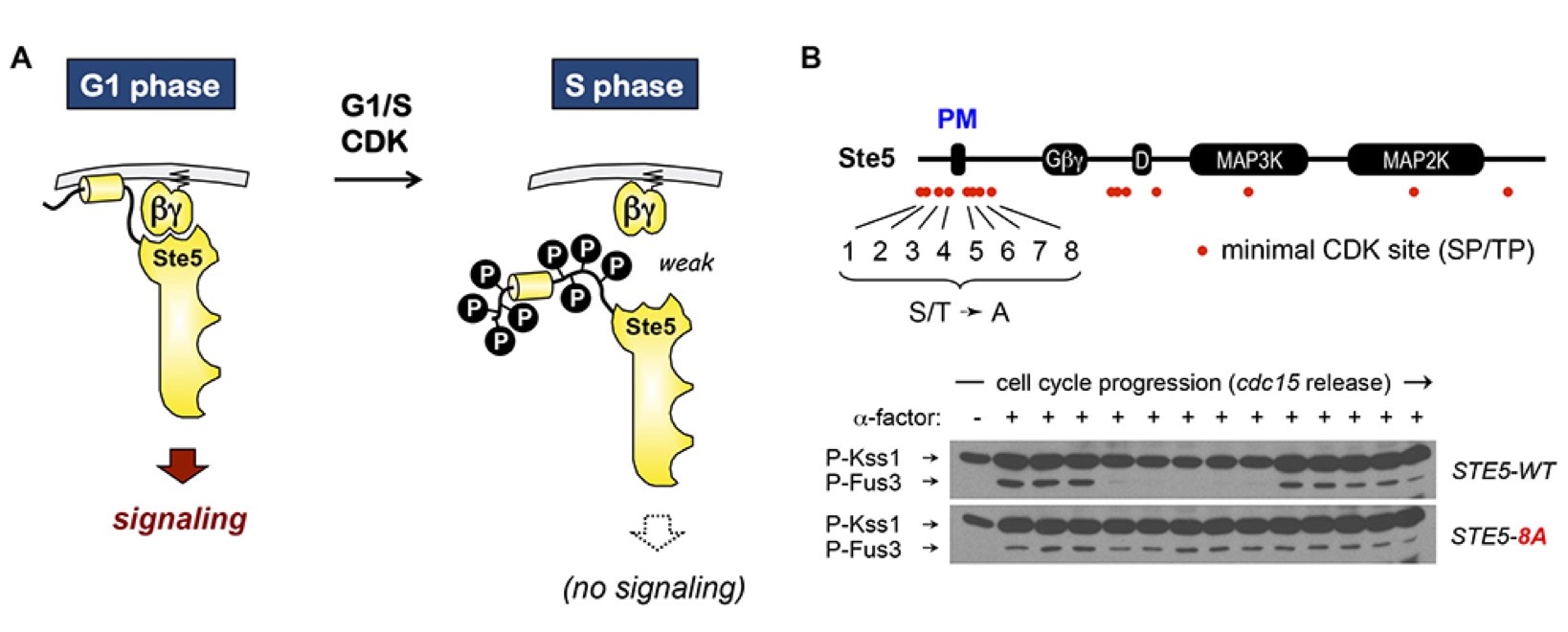Cell Cycle Regulation of Signaling
Pheromone signaling arrests cells in G1 phase, prior to the cell cycle commitment point called “Start”. But once cells pass Start, pheromone signaling is inhibited by the action of CDKs. We found that the target of this inhibition is Ste5. Specifically, CDKs phosphorylate Ste5 at multiple sites flanking the membrane-binding PM domain, thereby disrupting membrane association. If these sites are mutated to non-phosphorylatable residues (Ste5-8A), then signaling cannot be inhibited during cell cycle progression. Of note, phosphorylation at these sites exerts bulk electrostatic effects such that the magnitude of the inhibitory effect is proportional to the number of phosphates added. That is, there is a regulatory continuum in which partial phosphorylation yields only partial inhibition. This characteristic creates opportunities for regulatory diversity in which signaling can be modulated to varying degrees, or perhaps in concert with other regulatory inputs. Such possibilities are being explored in our current studies.


